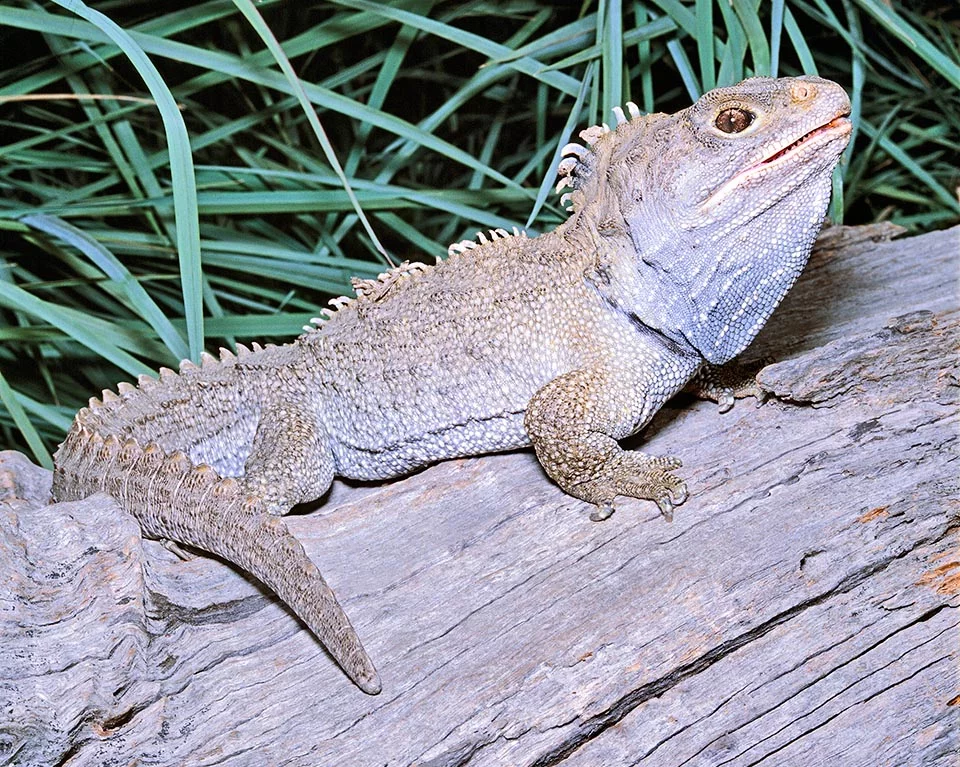1. What is Tuatara
The Tuatara (Sphenodon punctatus) is one of the world’s most extraordinary reptiles, often described as a living fossil. Native only to New Zealand, this remarkable creature has survived for more than 200 million years, making it the sole remaining representative of an ancient order of reptiles known as Rhynchocephalia. Despite its lizard-like appearance, the Tuatara is not a lizard it belongs to an entirely separate evolutionary lineage.
2. Physical Characteristics
The Tuatara typically grows to around 50–75 cm in length and can weigh up to 1.5 kg. It has a spiny crest along its back, which is more pronounced in males and gives the species its name, derived from the Māori language meaning “peaks on the back.”
One of its most fascinating features is the parietal or “third” eye, a light-sensitive organ on the top of its head. Although it doesn’t provide clear vision, this eye helps regulate the animal’s circadian rhythm and hormone production.
ALSO SEE : Monkey Orchid (Dracula simia): The Orchid That Looks Like a Monkey
3. Behavior and Lifestyle
Tuatara are nocturnal reptiles that prefer cool environments, unlike most reptiles that thrive in warmth. They inhabit coastal forests and islands where temperatures are mild.
Their diet consists mainly of insects, worms, spiders, and small vertebrates, and they are known to occasionally prey on young seabirds.
What makes the Tuatara even more unique is its slow metabolism and growth rate. It can take 10 to 20 years to reach sexual maturity, and individuals may live well over 100 years in the wild.

4. Reproduction and Life Cycle
Reproduction in Tuatara is one of the slowest among reptiles. Females lay eggs only once every two to five years, and incubation can last up to 15 months the longest of any reptile.
Temperature plays a crucial role in determining the sex of the offspring: warmer temperatures tend to produce males, while cooler ones yield females. This sensitivity to climate makes Tuatara populations vulnerable to global warming and environmental changes.
5. Conservation and Significance
Once widespread across New Zealand, Tuatara populations declined dramatically due to habitat loss and the introduction of predators such as rats and cats.
Today, they survive primarily on protected offshore islands and wildlife sanctuaries where predators have been eradicated. Conservation programs, including captive breeding and reintroduction efforts, have been successful in stabilizing their numbers.
For the Māori people, the Tuatara holds cultural and spiritual importance, symbolizing wisdom, longevity, and connection to the ancient world.
6. Interesting Facts
- The Tuatara’s skeleton and skull structure are nearly identical to fossils from the age of the dinosaurs.
- It can hold its breath for up to an hour, an adaptation to its slow metabolism.
- Its teeth are not separate structures but extensions of the jawbone, which eventually wear down with age.
7. Conclusion
The Tuatara stands as a testament to evolutionary resilience. As the only survivor of a prehistoric reptile lineage, it provides scientists with valuable insights into vertebrate evolution. Protecting this extraordinary species is vital not only for New Zealand’s natural heritage but also for understanding the story of life on Earth itself.
ALSO SEE : Reog Ponorogo Dance: A Cultural Heritage and Symbol of Bravery from East Java





